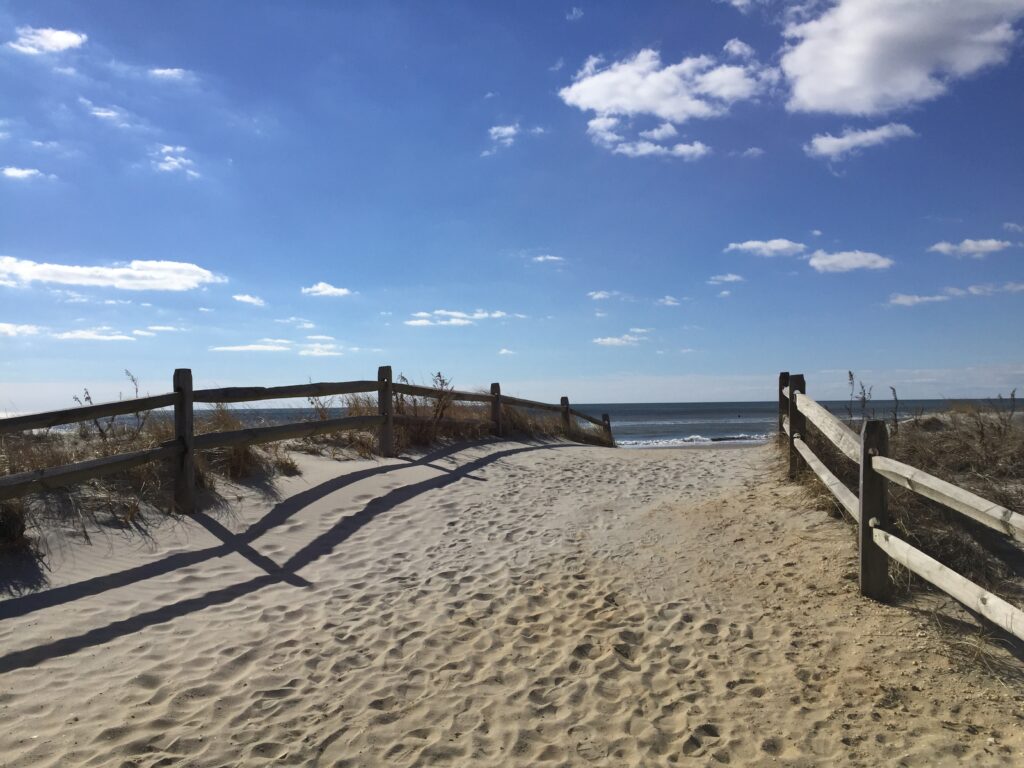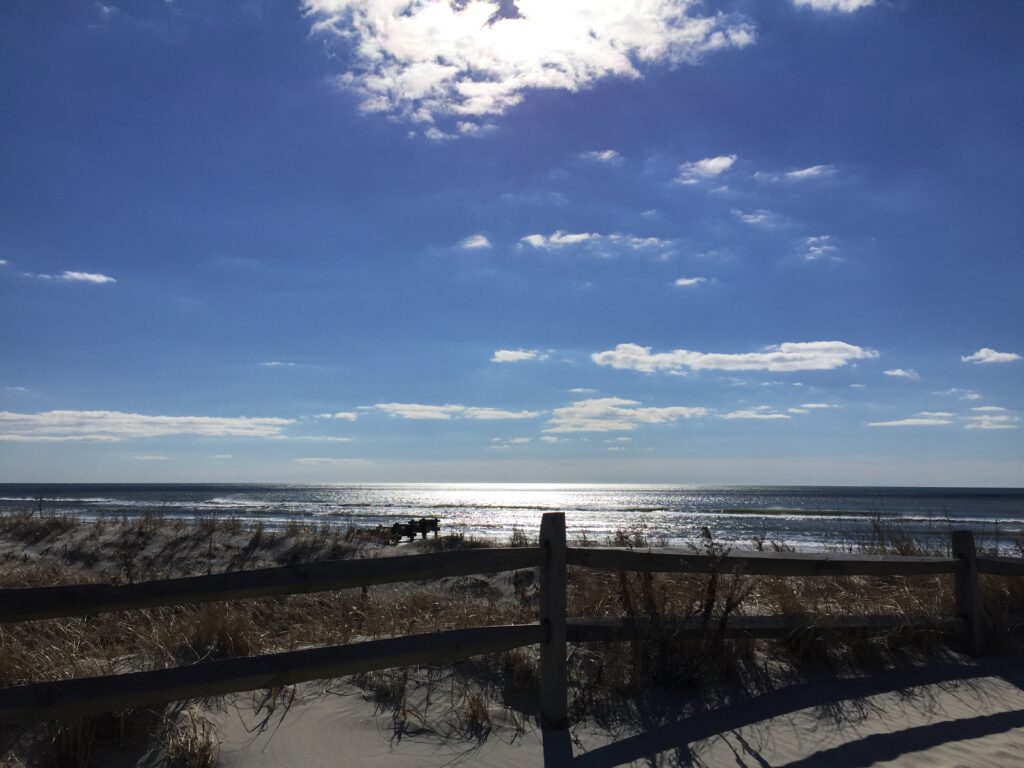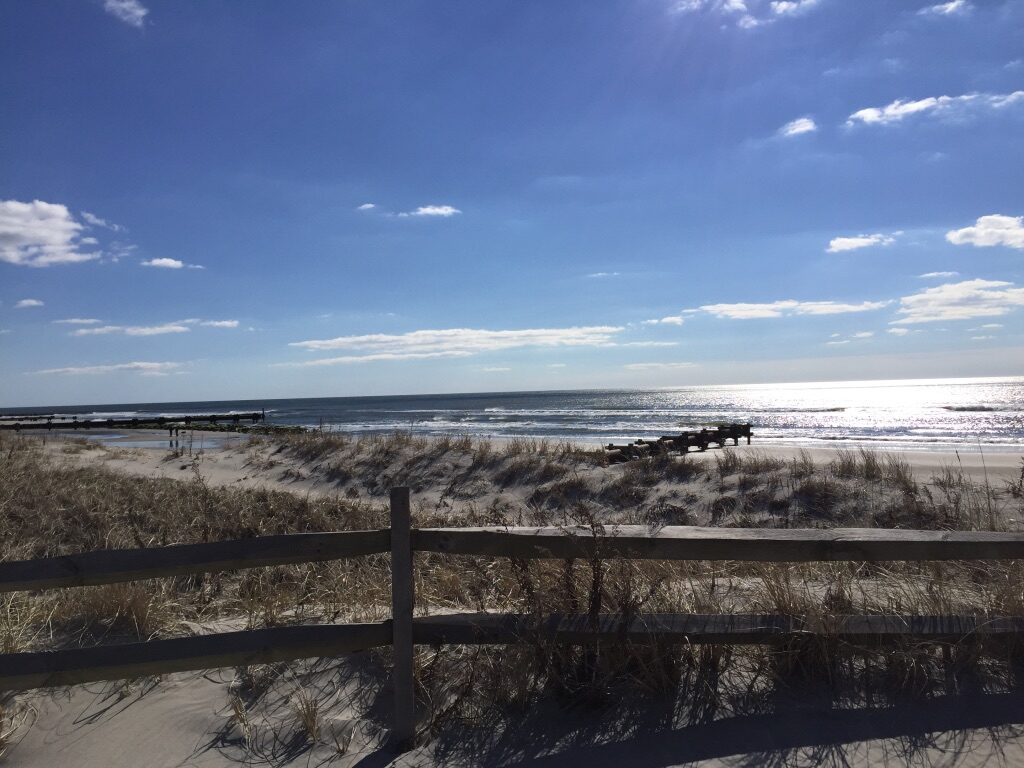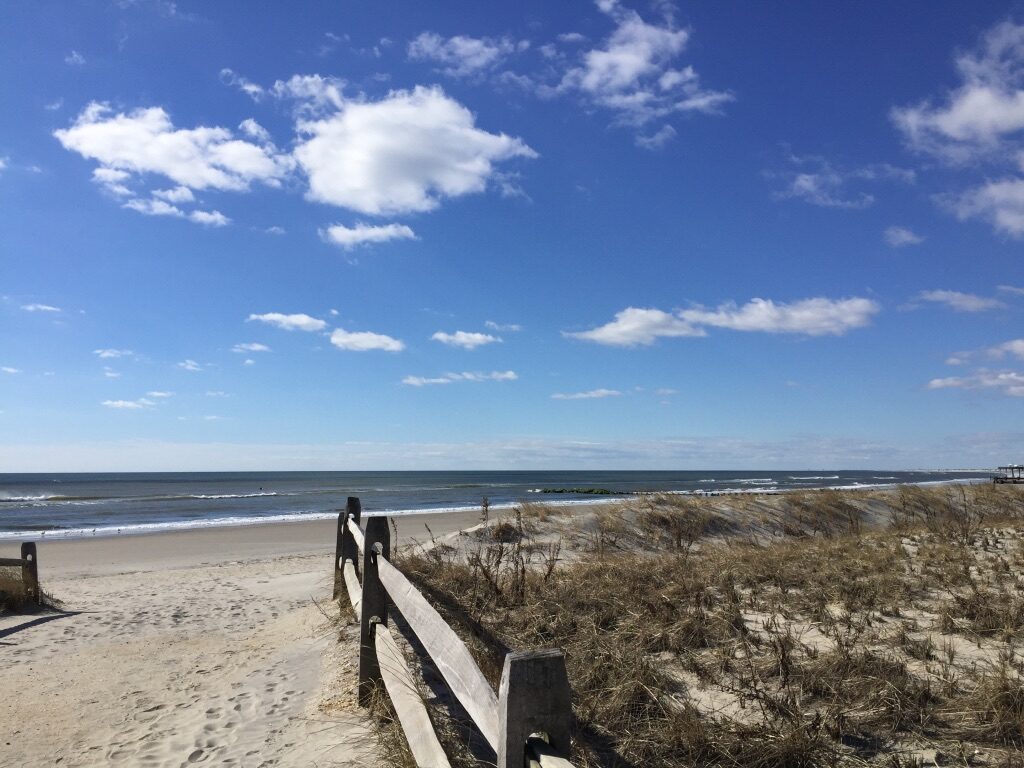
10th & Boardwalk. 51°F. Saturday, March 16, 2019.
My spring break was spent in my hometown Ocean City, New Jersey where it was beautiful low-fifty degree weather and sunny all week, with a couple 60+ degree days. That being said, I spent a fair amount of time taking advantage of the unusually warm March by walking on my town’s soft white sandy beaches. This sand is an important part of making my town the popular shore community it is due to its fine texture and light color due to its makeup of primarily quartz with traces of titanium and iron oxide (Stopyra, 2017).
Ocean City was originally a summer home for the Lenape Native Americans. It served as a slightly cooler location to live over the summer with access to plentiful fish and ability to collect oysters and clams. Around the year 1700, Ocean City became home to whaling via whaler John Peck, eventually naming the island Peck’s Beach, in addition to cattle grazing and a place to picnic (Ocean City Vacation, 2019).
In 1879, four Methodist ministers settled Ocean City as a seaside resort and camp meeting place, which lead to the development of the summer family resort the town is today. Currently, OCNJ is a large tourist destination for people from South Jersey and people in the Philadelphia area and suburbs. In the summer time, the beaches are packed with families, beach umbrellas, and seagulls on the hunt to steal the occasional hot dog. But the offseason is really the best time to visit.
Days like today, where it is sunny, warm, and not too windy and the beaches are almost entirely empty are the best days.

Almost all vegetation on the beach here is located on the dunes. Primary species here include Bitter Panicgrass (Panicum amarum), ‘Cape’ American beachgrass (Ammophila breviligulata), Sea Oats (Uniola paniculata), and ‘Avalon’ Saltmeadow Cordgrass (Spartina patens) (Wootton et al, 2019). The purpose of dunes on beaches is to protect the island from flooding during storms, limit erosion on beaches, and provide habitat for wildlife.

The tracks on the beach entrance included foot traffic of many tourists and locals alike, some with their dogs. Otherwise, wildlife tracks were limited to various seagulls, most of which were birds that spend their winters in New Jersey. Soon though, more birds will begin migrating back north.
The change in scenery and climate from Burlington’s Centennial Woods to Ocean City’s beaches is quite stark. I struggle to find too many similarities in the phenology of these spaces as the nature of the sites are very different. That being said, both locations are beginning to experience an increase in bird species, a warming of temperature as spring is showing its first signs, and plants beginning to thaw out.
Spring is coming up quickly (in just a few days actually!) and I couldn’t be happier to have the ability to witness snippets of my hometown’s changing of the seasons through occasional breaks, as well as an in-depth look at my new home in Vermont.


Ocean City Vacation. (2015). A Brief History of Ocean City, NJ. Retrieved March 17, 2019, from https://www.oceancityvacation.com/about-the-island/history.html
Stopyra, D. (2017, August 16). Why sand doesn’t always look the same in New Jersey. Retrieved March 17, 2019, from https://whyy.org/articles/why-sand-doesnt-always-look-the-same-in-new-jersey/
Wootton, L et al. (n.d.). Dune Manual. NJ Sea Grant Consortium. Retrieved March 17, 2019, from http://njseagrant.org/wp-content/uploads/2016/07/Dune-Manual-Pgs-compressed.pdf


Recent Comments